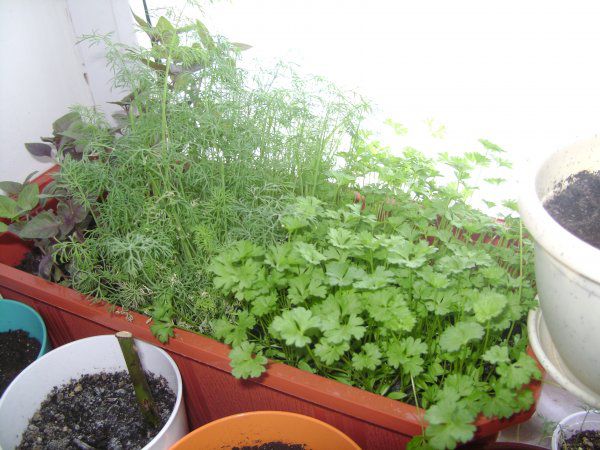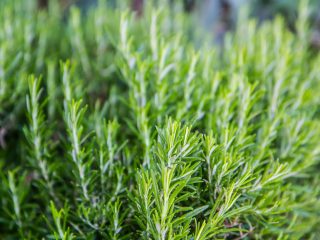Content
Parsley on the windowsill is a convenient way to provide yourself with free and environmentally friendly greens for the whole year. Growing this herb does not take much time or effort. But, despite its unpretentiousness, parsley requires some care. Therefore, novice summer residents are advised to pay attention to some practical tips on planting and growing crops.
Is it possible to grow parsley on a windowsill?
You can cultivate parsley on a windowsill, both on southern and northern windows. There are no special requirements for containers and soil for growing greens. But at home it is important to ensure:
- regular watering;
- spraying foliage;
- intense lighting in autumn, winter and cloudy weather;
- acceptable (room or slightly higher) temperature.
Under such conditions, the first harvests are obtained 1.5-2 months after planting. The greenery is not cut off completely, but leaving half or a third of the branches. The second wave will start in about 1 month.

To grow parsley on a windowsill, you can use seeds of any variety.
Varieties of parsley for the windowsill
There are no fundamental requirements for the variety of parsley, since, provided sufficient conditions are met, any variety can be grown on a windowsill.
But it is desirable that it be an early ripening variety, for example:
- Russian Feast;
- Beads;
- Common leaf;
- Fragrant alley;
- Vorozheya;
- Fitness;
- Gloria;
- Emerald lace;
- Morning freshness;
- Astra and others.
You can also pay attention to the type of variety - parsley can be leafy or curly. Both are grown on window sills and in greenhouses, but the openwork leaves look beautiful, which is why they are often used for serving dishes.
How to plant parsley at home on the windowsill
Planting parsley seeds for growing on a windowsill is very simple. To do this, they need to be soaked for several days and disinfected in a manganese solution. The soil is made from a regular mixture or purchased in a store.
Preparing the soil and planting container
Parsley is an unpretentious plant, so soil for it can be stored in the summer or autumn at your summer cottage. It should be light soil with a neutral or slightly acidic reaction (pH 6.5-7.0).
To get maximum yield at home, it is recommended to use the following composition:
- peat – 2 parts;
- garden soil - 1 part;
- river sand – 1 part;
- humus - 1 part.
A simpler option is to mix garden soil (2 parts) with humus (1 part) and sand (1 part). The soil can first be watered with a weak solution of potassium permanganate (1-2%) to disinfect it.
The container for growing parsley on the windowsill all year round should be high enough (at least 15 cm). The fact is that parsley grows quite well, and its developed roots go to great depths.The remaining requirements are not too strict: the container must be durable, non-fragile and easily fit on the windowsill.

Rectangular plastic containers are ideal for growing parsley on a windowsill.
Preparation of planting material
At home, you can grow parsley on your windowsill from seeds and roots. In the first case, the harvest can be obtained in 6-8 weeks. Before planting, seeds should be prepared:
- First they are soaked in water. Some gardeners recommend putting the seeds in a glass, but it would be more correct to put them on clean, damp gauze, folded in 2-3 layers and cover with the same cloth.
- The container with the seeds is placed in a dark and warm place for 3-5 days, periodically moistening the gauze with a spray bottle. Do not allow it to dry out.
- On the day of planting, the seeds are placed in a weak solution of potassium permanganate for 30 minutes. This procedure is carried out for disinfection.
Rules for planting parsley on the windowsill
Landing requirements are very simple:
- The pot is washed with running water and wiped.
- A small drainage layer (up to 3 cm) is placed on the bottom. This could be expanded clay or other small stones.
- Then comes the substrate itself - it is filled almost to the top, but not compacted.
- After this, several longitudinal grooves are made with a minimum depth (no more than 0.5 cm).
- Water generously and sow seeds.
- Then they are covered with earth.
- The soil is sprayed from a sprayer.
- Cover the container with film or glass and place it in a warm place with a temperature of at least +25°C.

The drainage layer avoids rotting of the parsley roots when growing it on a windowsill
After this, the greenhouse is removed and the pot is placed in a cooler place - room temperature 19-22 °C.
Caring for parsley on the window
Caring for parsley on the windowsill is not very difficult. It is not necessary to feed it, but providing normal watering, lighting and temperature is very important.
Optimal growing conditions
When growing parsley on a windowsill in winter, the main problem for beginners is lighting. At the end of spring and during the summer, there is enough natural light if the pot is placed on a south or south-east window.

If possible, in summer it is better to move the pots to the balcony
In autumn and winter, parsley needs additional intense lighting. It can be provided using special phytolamps or LEDs. When installing a lighting system, you need to focus on several parameters:
- Minimum power of 1 lamp 100 W (for illumination of 1 m2).
- The distance for hanging is 40-50 cm from the tops of the plant.
- The light should be directed like the sun at its zenith - from top to bottom.
- The daylight hours should be 12 hours. For example, you can turn it on at 8 a.m. before leaving for work and turn it off in the evening at 8 p.m.
The temperature at first should be maintained at 25°C and above, then 18-20 is allowed, minimum 15°C (for adult plants). Moisturizing should be regular, and in the summer heat - enhanced. In this case, you need to pay attention to the parsley itself: if it is elastic, then everything is in order.
Therefore, in summer, during periods of drought, it is better to shade the window a little using light curtains or thin paper.At this time, the parsley will also need additional moisture.

When grown on a windowsill, parsley is not only watered, but also sprayed in the evening
Watering
Parsley, like any garden herb, loves water. Therefore, watering should be regular. It is important to ensure that the top layer of soil remains moderately moist. For irrigation, use ordinary tap water, which is collected overnight in a container for settling. During drought, foliage needs daily spraying. It is better to do this late in the evening, after sunset.
What to feed
It is not necessary to feed parsley on the windowsill. If humus was initially present in the soil when planting, then the first harvest can be harvested after 1.5 months. Sometimes the crop develops slowly, forming weak leaves.
In such cases, you can apply nitrogen fertilizers (one to choose from):
- ammonium nitrate;
- urea;
- chicken humus.
The amount of fertilizer can be calculated based on the area of the container. Usually it is enough to fertilize 1-2 times a month, but there should be no more than three times per season.

Fertilizers will ensure lush growth of parsley on the windowsill
Useful tips
In general, the process of growing garden herbs on a windowsill is quite simple, so you can cope with this task without special skills. Points to pay attention to:
- After planting, the first seedlings should hatch in about a week.If several days have passed and they have not appeared, something is clearly going wrong. Perhaps the seeds were very old.
- Periodically, the boxes with parsley need to be turned, because the greenery will actively reach towards the sun. This is necessary in order to ensure even, symmetrical growth.
- The room where grass grows should be ventilated periodically. But at this point (especially in autumn and winter), the pots are removed away from drafts.
- Also, you should not keep parsley on the windowsill close to the radiator, because it does not tolerate dry air.
- As soon as it is warm enough outside (consistently above +10°C), it is better to move the containers to the balcony. There they will receive more sunlight and will be ventilated from all sides.
In rare cases, even when grown on a windowsill, parsley can be affected by fungal infections, the most common being powdery mildew and white spot. Plants are treated with fungicides (for example, Fitosporin). If garden pests are detected (mainly aphids), it should be treated with Biotlin or Fitoverm.
For example, a solution of baking soda, ammonia, laundry soap or an infusion of onion peels helps against aphids.
Conclusion
Parsley on the windowsill can grow at any time of the year. The main requirement is to maintain acceptable temperature, humidity and light levels. In such conditions, both experienced and novice summer residents will be able to get a rich harvest of their own greenery.








